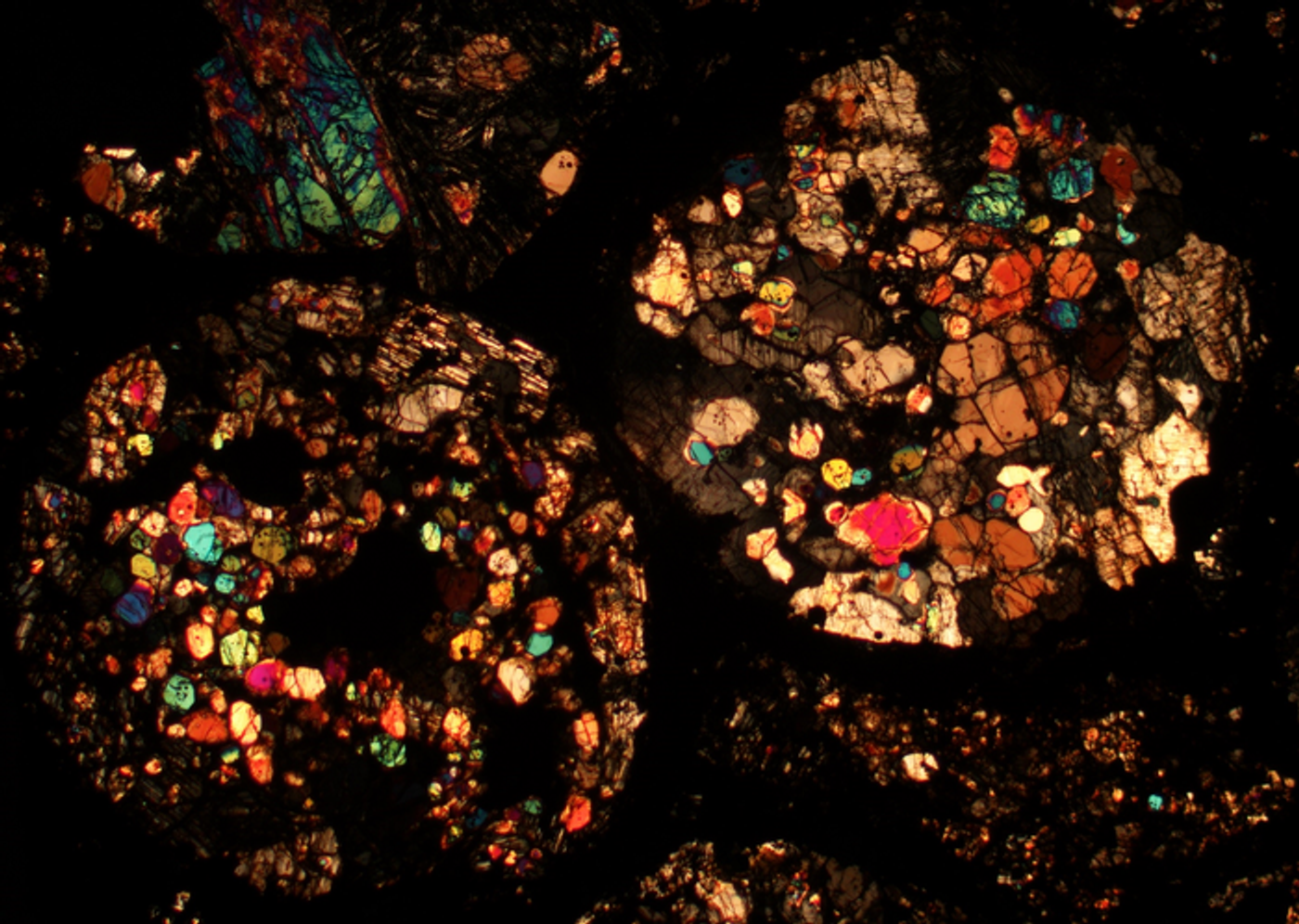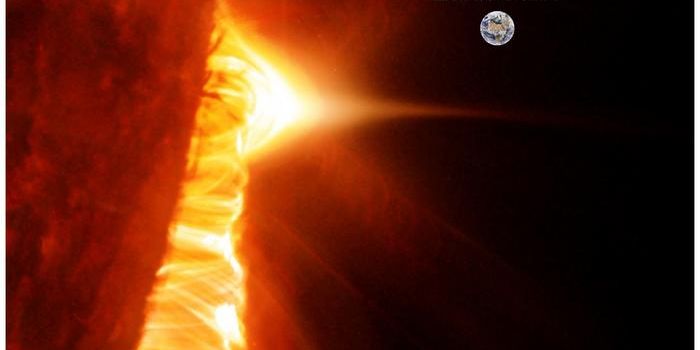Meteorite Record Tells Story of "Poorly Mixed Cake Batter" for Early Solar System
Microscopic image of a meteorite thin section. Each color represents a different mineral, since light travels through each one in various ways. Chondrules are the round mineral aggregates, which constitute a major component in primitive meteorites. (Credit: Nicole Xike Nie)
While we often associate meteorites as simply rocks that fall to Earth in an impressive streak of light across the night sky, these space rocks can teach scientists about the early history of the solar system by carrying clues regarding its formation, early conditions, and evolution from as far back as billions of years ago. This history not only involves how the Earth and planets formed, but what kinds of elements and minerals were used in their formation, along with when they might have arrived in the ancient past.
It is this history that a recent study published in Science where a team of researchers at the Carnegie Institution for Science attempted to unlock by examining almost three dozen meteorites with the goal of understanding how the element potassium was delivered to the Earth in the early stages of solar system formation. This study holds the potential to help us better understand solar system formation processes and the composition of the planets, as well.
“The extreme conditions found in stellar interiors enable stars to manufacture elements using nuclear fusion,” said Dr. Nicole Nie, who is a postdoctoral scholar research associate at Caltech but conducted the research at Carnegie, and lead author of the study. “Each stellar generation seeds the raw material from which subsequent generations are born and we can trace the history of this material across time.”
For the study, the researchers measured the ratios of three potassium isotopes within samples of 32 meteorites of both carbonaceous chondrites (CC) and noncarbonaceous (NC) origin. Every element contains protons, neutrons, and electrons, but while each possesses a distinctive number of protons—potassium has 19—their isotopes possess differing amounts of neutrons—potassium has 20 in its base form but can also possess between 12 and 40 neutrons throughout its isotopic range.
“By studying variations in the isotopic record preserved within meteorites, we can trace the source materials from which they formed and build a geochemical timeline of our Solar System’s evolution,” said Dr. Da Wang, who is at Chengdu University of Technology but conducted the research at Carnegie, and a co-author on the study.
Their results indicated a greater amount of potassium isotopes within CC meteorites that were created by massive star explosions, also known as supernovae. On the other hand, they discovered that NC meteorites possess the same amount of potassium isotope ratios as observed on Earth and throughout the solar system.
“This tells us that, like a poorly mixed cake batter, there wasn’t an even distribution of materials between the outer reaches of the Solar System where the carbonaceous chondrites formed, and the inner Solar System, where we live,” concluded Dr. Anat Shahar, who is a Staff Scientist at Carnegie, and a co-author on the study.
Going forward, more research is required in applying this study to current models of solar system and planetary formation and see if it changes longstanding hypotheses about how Earth and the rest of the planets came into existence.
Sources: NASA, Science, EurekAlert!
As always keep doing science & keep looking up!









